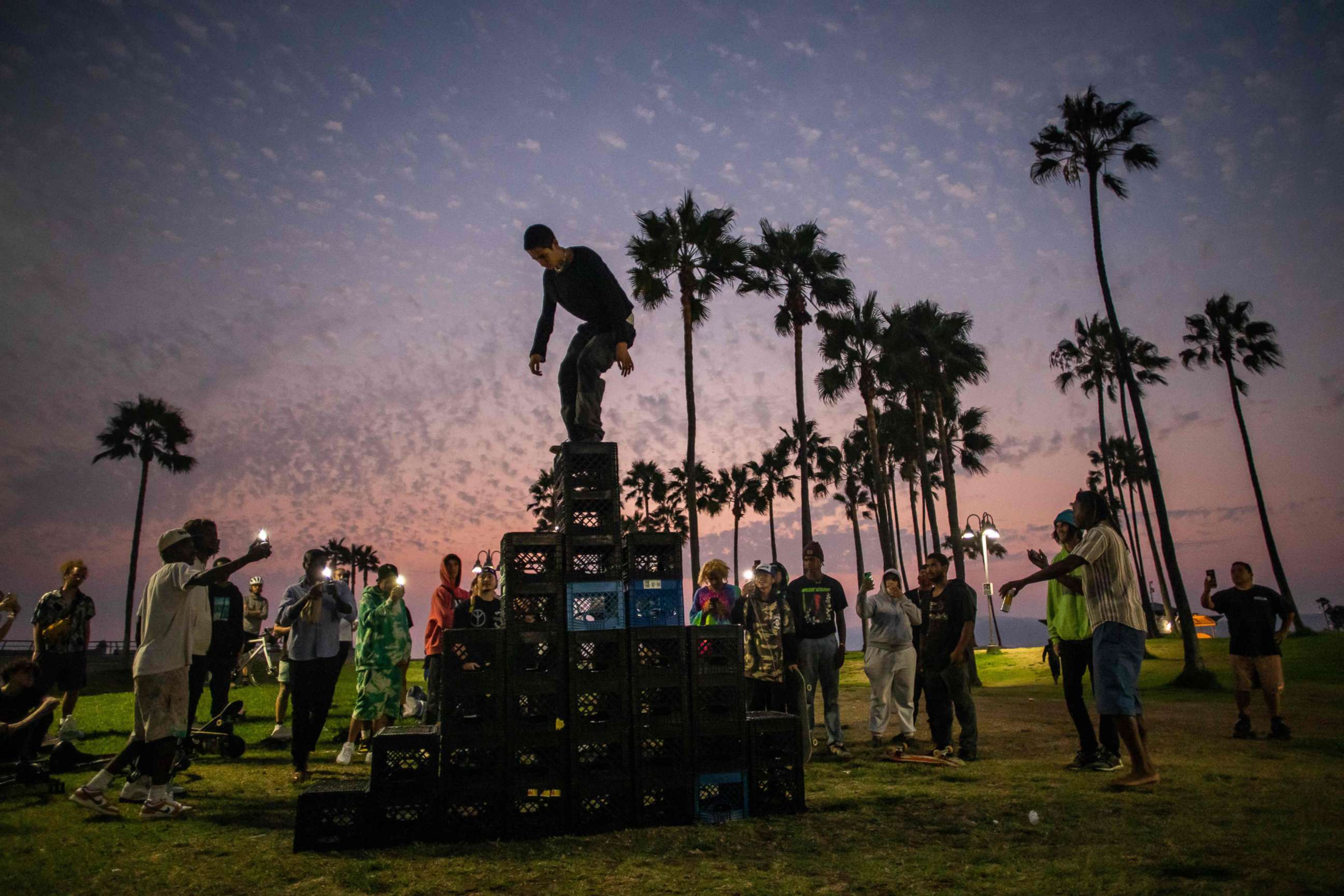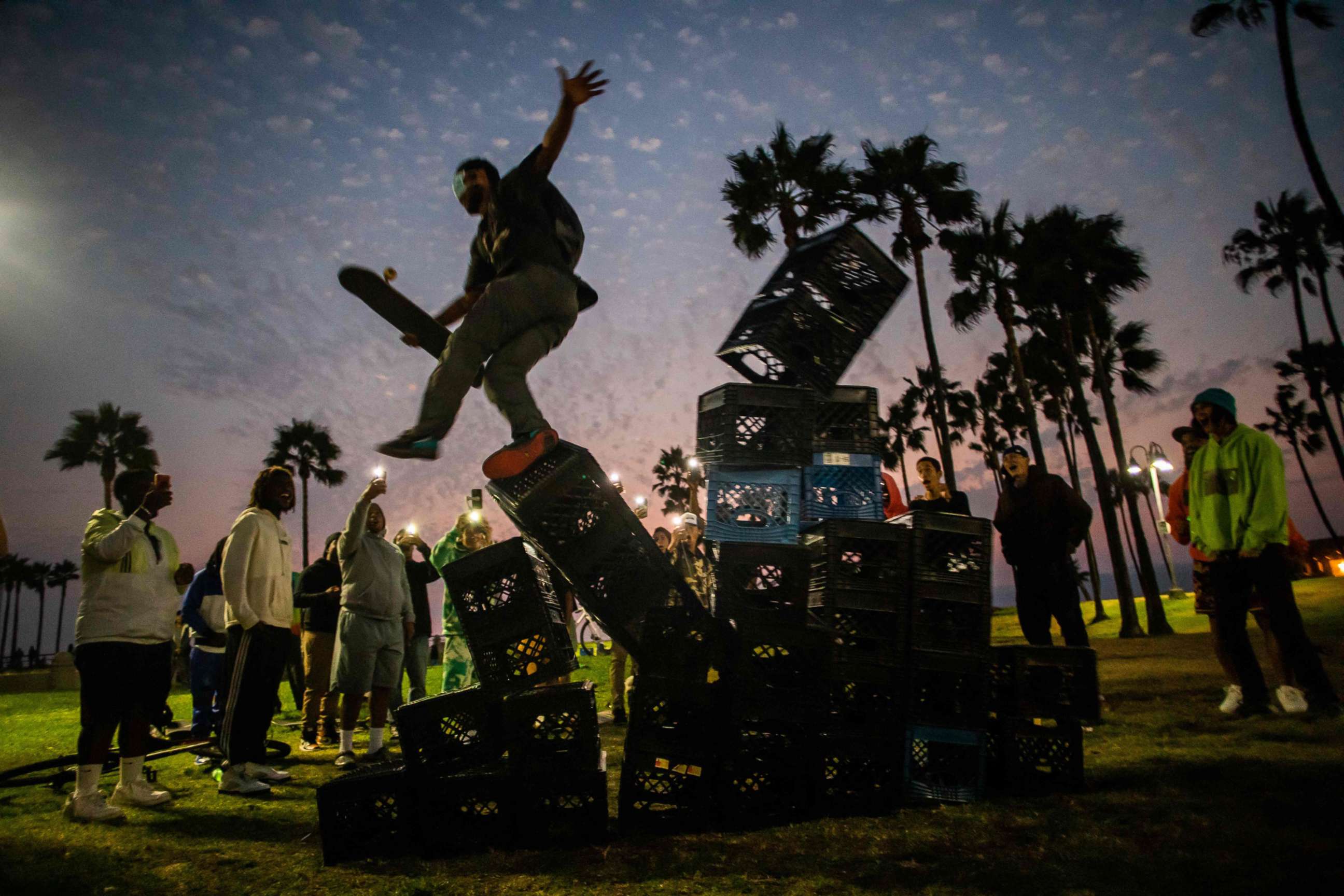Milk crate challenge: Why dangerous stunts go viral
The dangerous stunt is spreading like wildfire online.
The milk crate challenge is taking over social media, with videos of people attempting -- and usually failing -- to walk up and over a pyramid of milk crates.
According to Know Your Meme, a website that documents the origins and history of online content, the trend started Aug. 1, when the first video of the challenge was posted to Facebook and quickly garnered hundreds of thousands of views.
Now, videos copying the stunt are appearing all over the internet, also racking up thousands, sometimes million, of views.

The milk crate challenge joins a long list of viral antics -- the ice bucket challenge and the Tide pod challenge among them -- but why are so many people so eager to jump on these bandwagons?
According to Julie Ancis, a cyberpsychology expert and professor at the New Jersey Institute of Technology, the answer is complicated.
The concept of a "dare" or a challenge isn't new, nor is trying something outrageous for an adrenaline rush or for attention, Ancis said, but the internet has changed our relationship to these kinds of stunts. Instead of feeling pressure to perform for our friends or family, many crave impressing peers, or really anyone, who's part of their online community. It's all about likes, shares, views.
"All humans have a need for recognition," Ancis told ABC News. "This is an opportunity for millions of people to see you engaging in something that seems so extreme. ... The attention or competition for attention is very fierce, and it makes these dares more and more extreme to capture attention."

The milk crate pyramids seen in most videos are stacked in ascending order -- one, then two, typically up to seven, then back down to one. Video after video shows challengers losing their balance, making dramatic, painful, dangerous falls, with the crates sent tumbling.
But people keep doing it.
Lewis Nelson, a doctor and professor at Rutgers University, warns that the challenge is very dangerous and can lead to serious back, neck and rib injuries -- to name just a few.
"This is a high-risk endeavor with very little reward," Nelson told ABC News. "Some of these people wind up with long-term, lasting injuries, and it could be irreversible."
And with so many hospitals and medical facilities struggling to cope with rising COVID-19 cases, those injured attempting the stunt could have to wait hours for care.
"There are parts of the country where they actually are overwhelmed with COVID patients, so every additional unnecessary patient is a burden to the health care system," Nelson added.
Ancis said research shows that emotional content -- something that makes us laugh or makes us feel silly -- is more likely to capture an audience's attention, which in this case means funnier, and often more painful, falls off the crates.

With social media users bombarded with content all day, more people seek both to produce and to watch the extreme or the exaggerated, the things that stand out from the noise, Ancis said.
"The information is just endless," Ancis said. "I'm afraid that it's making us numb to really serious issues ... violence, hate, discrimination. We're so numbed out that we're looking for more and more sort of extreme content to feel something."
TikTok has vowed to delete videos of the challenge from its platform.
"TikTok prohibits content that promotes or glorifies dangerous acts, and we remove videos and redirect searches to our Community Guidelines to discourage such content," a spokesperson said in a statement to ABC News. "We encourage everyone to exercise caution in their behavior whether online or off."
Ancis encourages social media users to be mindful of the content they watch and to ask themselves how what they're consuming affects their actual lives.
"Have more awareness of what you're consuming online, its impact on your life, and consciousness around what you're posting, the usefulness of that and the implications of that," Ancis said.




